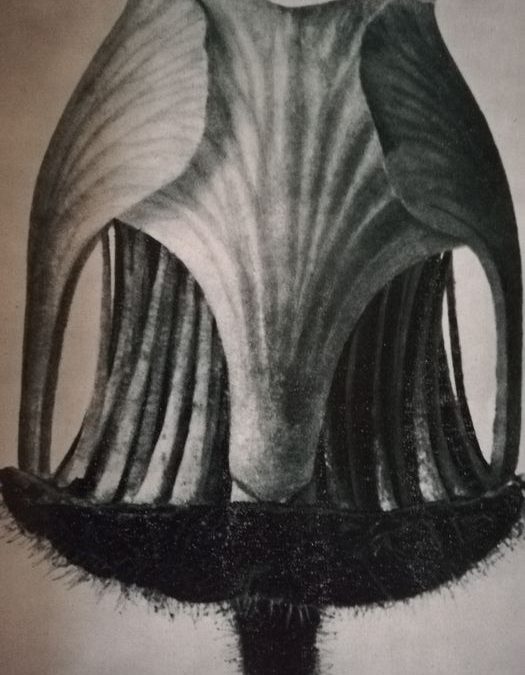Artist Karl Blossfeldt worked during the German nature craze at the dawn of the 20th century–a period characterized by wonder at natural forms and their imitation in design. Blossfeldt’s output consists of two volumes of rather small, primitive, salt-print-processed plant photographs: Urformen der Kunst (Primary Forms in Nature [my translation], 1928) and Wunder in der Natur (Magic in Nature, 1942). The volumes function like an herbarium.
The process and objectives of this work differ substantially from my own.
- Blossfeldt endeavored to create a catalog of natural forms for his technical drawing students to copy by free hand.
- Improving teaching standards was the measurable outcome.
- Specimens were trimmed and adjusted to give a simple form for copying.
- So-called “elitist,” exotic specimens were rarely used; common weeds were preferred.
- The biology or behavior of the specimen was irrelevant.
- The blade of grass is a symbol of everlasting primeval laws governing all life.
- The rather alien plant forms attracted admiration from New Objectivity & Surrealism crowds.
In brief, my methods and concerns are almost the opposite of Blossfeldt’s project. Specimens are neither cataloged nor intended for copy to improve instruction. Specimens are not trimmed, but may be used in a dirty or broken state as found. Specimens are extremely exotic, researched and ordered based on disturbing biology or behavior such as parasitism. Regarding the final point–natural symbols of primeval laws–I do find the process of evolution apparent in each specimen, yet observe that natural selection yields increasing brutality. On the level hominins, a slow fade of behaviors characterized as humane is possible.
Finally, my work is intended to elicit an emotional response–repulsion, fear, confusion–via confronting the brutal machinery of nature. As regards the naturalist’s symbolic blade of grass: one look with a microscope yields a horrorshow of small shiny armored things embroiled in a mindless, prepetual bloodsport.
Common ground: Blossfeldt photographed in a sharp, hyper-realistic style that was out-of-step with then-popular soft-focus images. Similarly, my work has little to do with current fasion. Macro bug photography undertaken by scientists and hobbyists is a “gee-wiz” spectacle mostly about expensive equipment and ever-higher magnification, and means absolutely fucking nothing.
ADAM, H. C. 2017. Karl Blossfeldt: The Complete Published Work, Köln, Taschen.

